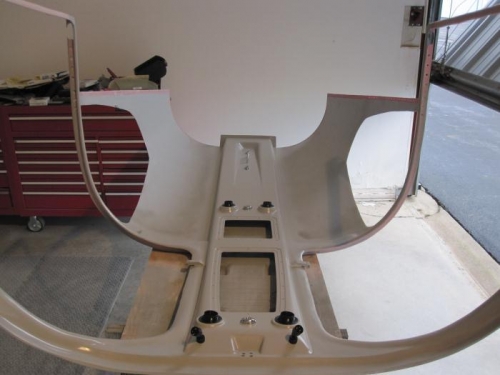CharlieWaffles
Well Known Member
I am just about to be ready to prep my canopy for painting and the Aerosport Overhead console. I've done a lot of reading and research and there is some good fiberglass information but a lot of it pertains to fairings or making your own parts.
So what I am wondering is, what have other people done to prep their interior canopy? From what I can tell, here is what I need to do:
1) Corse sanding with 80 grit to knock down large bumps and shape general contour. This will be done WITHOUT a rubber block
2) Dust and wash surface
3) Epoxy and squeegee for warts, low areas and pinholes
4) Sand with rubber block and repeat epoxy as needed
5) Shoot with high build primer and sand to ensure all areas are smooth
6) Paint
Any comments or recommendations? Vans builder manual says to thin the epoxy when doing this, but everwhere else I've read doesnt mention thining it.
So what I am wondering is, what have other people done to prep their interior canopy? From what I can tell, here is what I need to do:
1) Corse sanding with 80 grit to knock down large bumps and shape general contour. This will be done WITHOUT a rubber block
2) Dust and wash surface
3) Epoxy and squeegee for warts, low areas and pinholes
4) Sand with rubber block and repeat epoxy as needed
5) Shoot with high build primer and sand to ensure all areas are smooth
6) Paint
Any comments or recommendations? Vans builder manual says to thin the epoxy when doing this, but everwhere else I've read doesnt mention thining it.



















